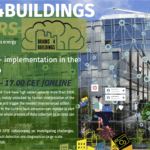Work Packages
- Home
- Work Packages
Our Approach
The B4B activities are executed in an open innovation setting, i.e., methods and algorithms will become publicly available. This will greatly contribute to reducing development costs by companies and thus improve the business case. This is tested within the project by helping the companies develop their own products based on the findings in the open living labs.
To create these conditions for good open cooperation, the B4B project is set up around living labs (test locations in office and educational buildings that are used as a first validation step to prototype, test and evaluate products and services in a protected environment) (circle 1).
These open-source results are validated by several consortium partners for scale-up and integration possibilities in use cases. This means that results from the first circle are validated at consortium partners in test environments for their potential for scaling up (circle 2).
In addition, we distinguish a circle 3 that is formed by a broad group of potential users and (market) parties who are interested in the results of the project or who wish to further disseminate these results to their supporters.
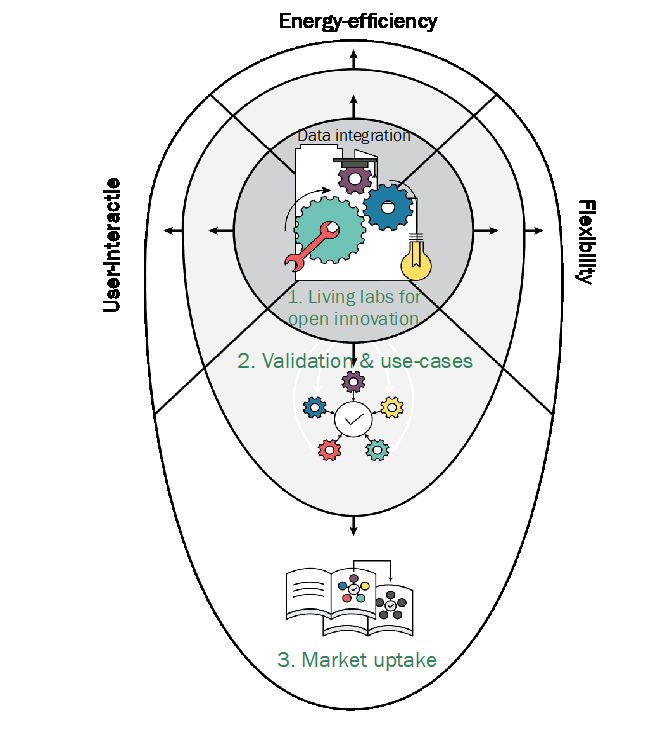
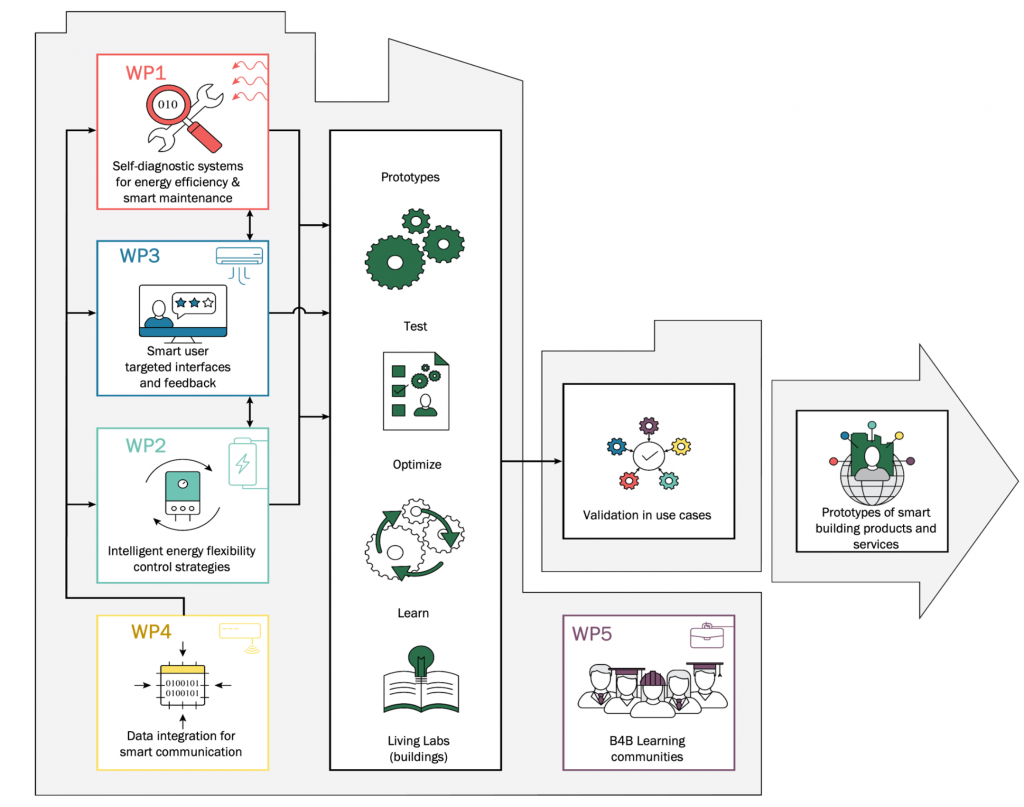
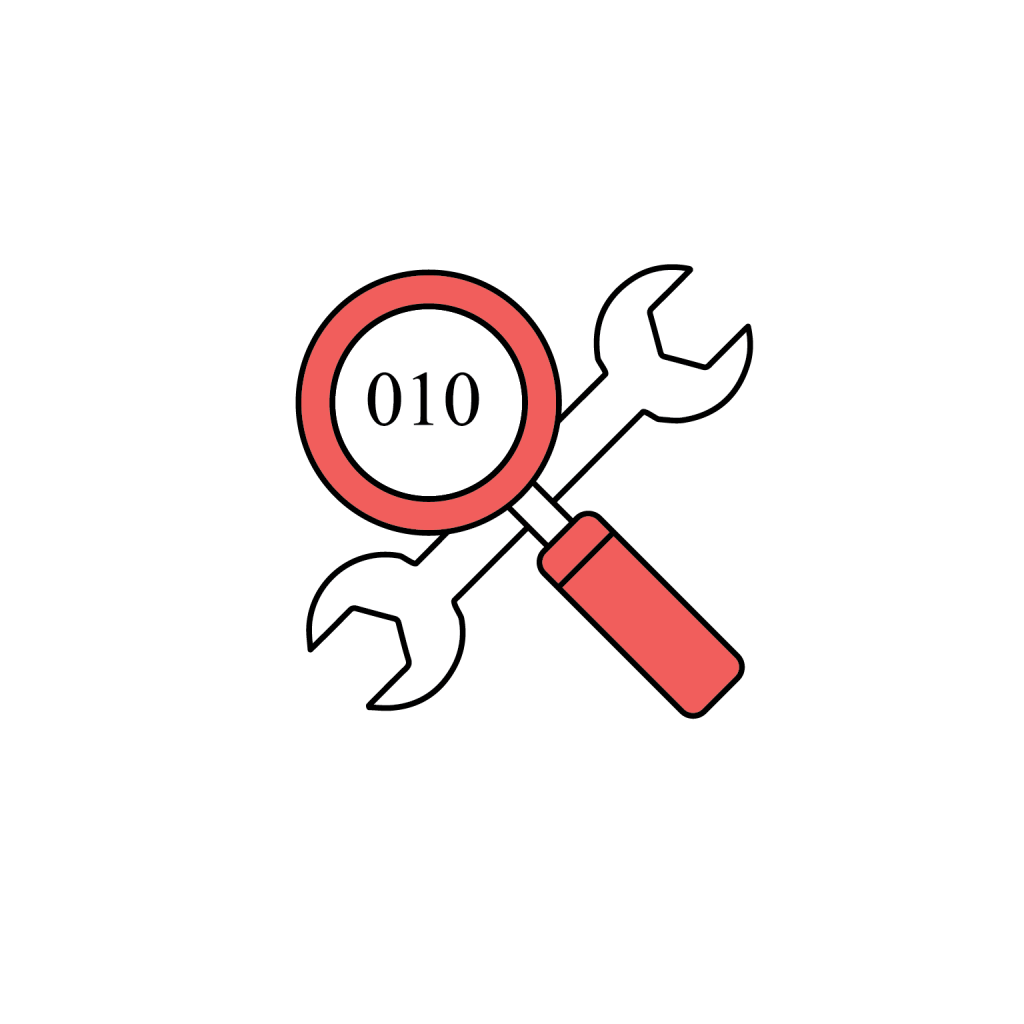
Work Package 1
Self-diagnostic systems for energy-efficiency and smart maintenance
Addresses the development of smart diagnostic systems to reduce energy losses in buildings in an automated way. This can then be used for performance-based maintenance planning.
Result 1: Prototype software plug-ins for self-diagnostic systematic errors and energy waste in building installations.
Result 2: Prototypes of smart software plug-ins for error detection, diagnosis and predictive condition-based maintenance.
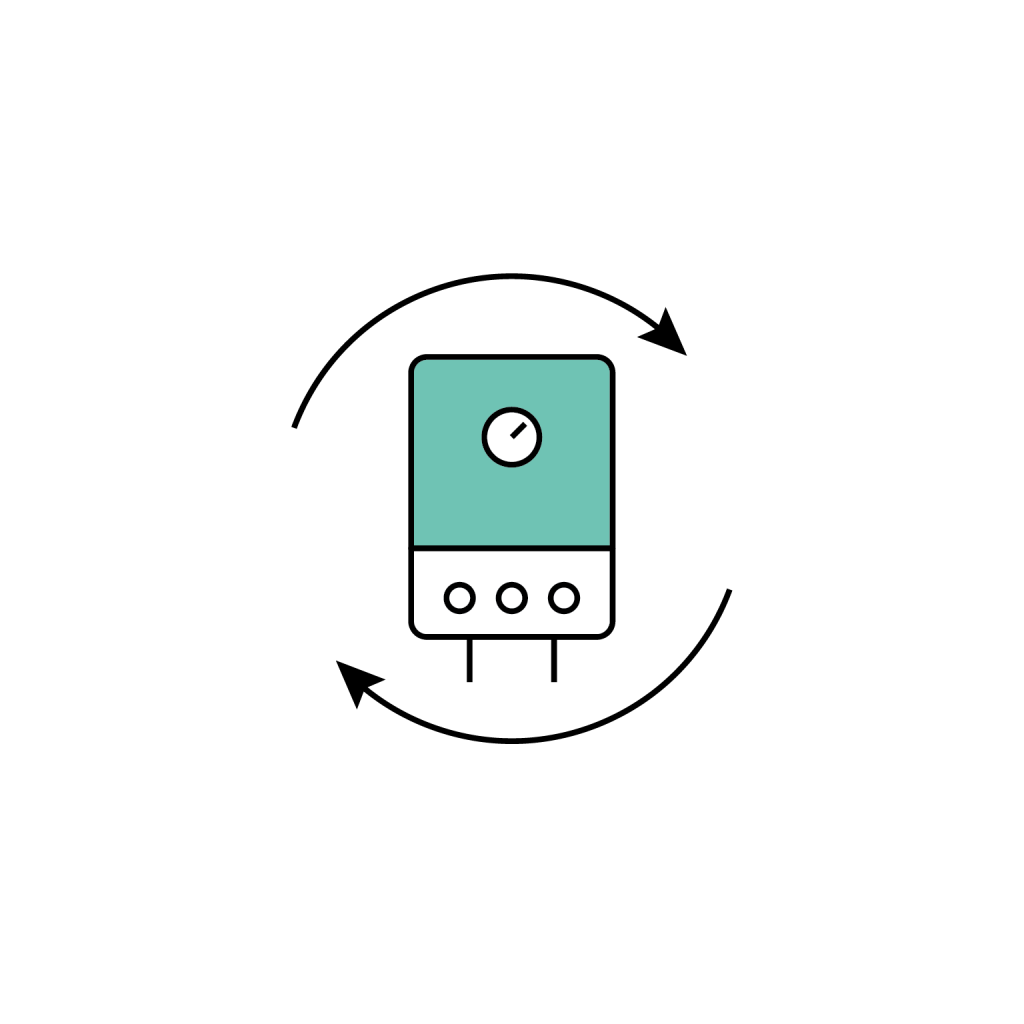
Work Package 2
Intelligent energy flexibility control strategies
Addresses the development of smart control models to increase energy flexibility (heat, cold and electricity) within buildings. Cost optimization, as well as CO2 emissions, comfort and maximum use of local resources are included.
Result 3: Open source HVAC & electrical installations model and algorithm prediction o supply and demand energy.
Result 4: Methods and prototypes of AI-based software plug-in for flexible multi-object energy optimization.
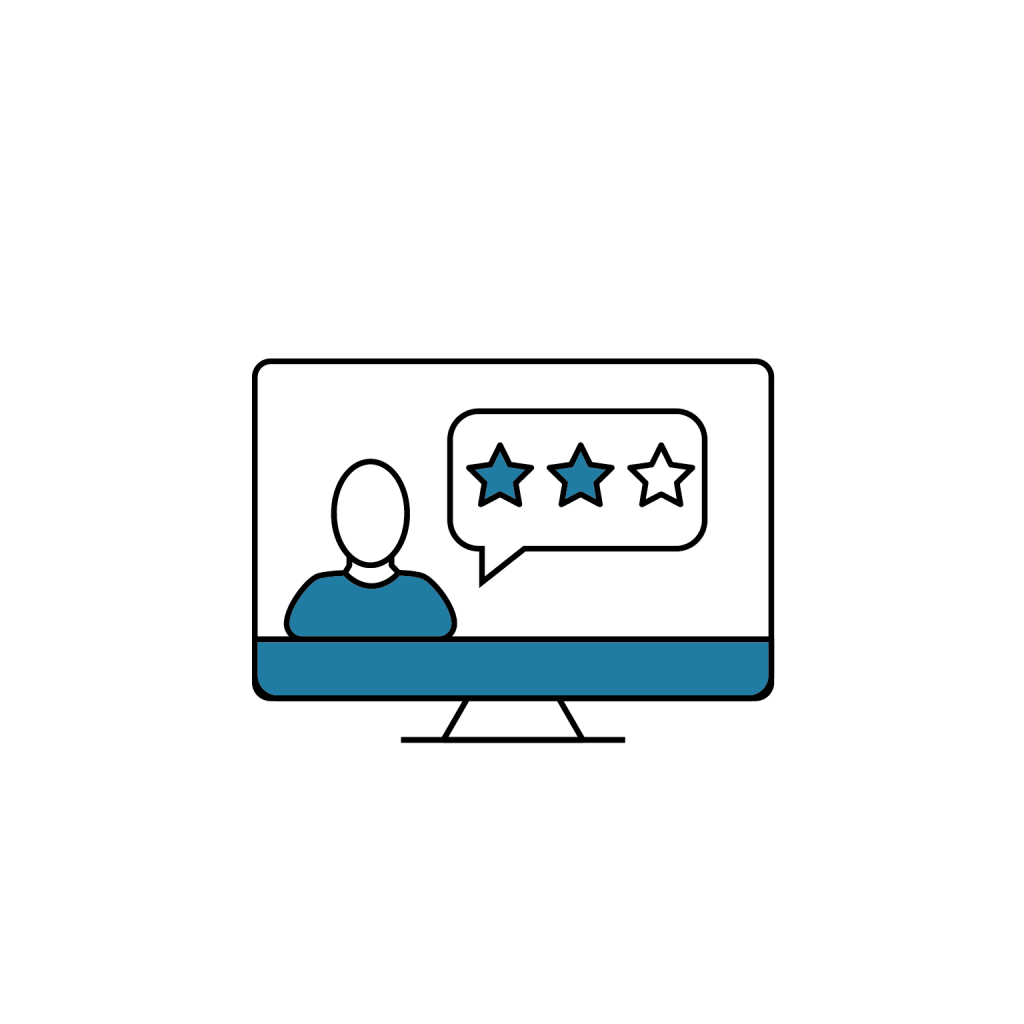
Work Package 3
Smart user targeted interfaces and feedback
Addresses the development of user interfaces (end users and facility managers) to guarantee an energy-efficient and healthy indoor environment and to encourage the user to achieve energy efficiency and flexibility.
Result 5: Methodology & data for a user-centered approach in smart building control.
Result 6: Prototypes of user-oriented interfaces for healthy indoor climate, energy efficiency and energy flexibility of the building.
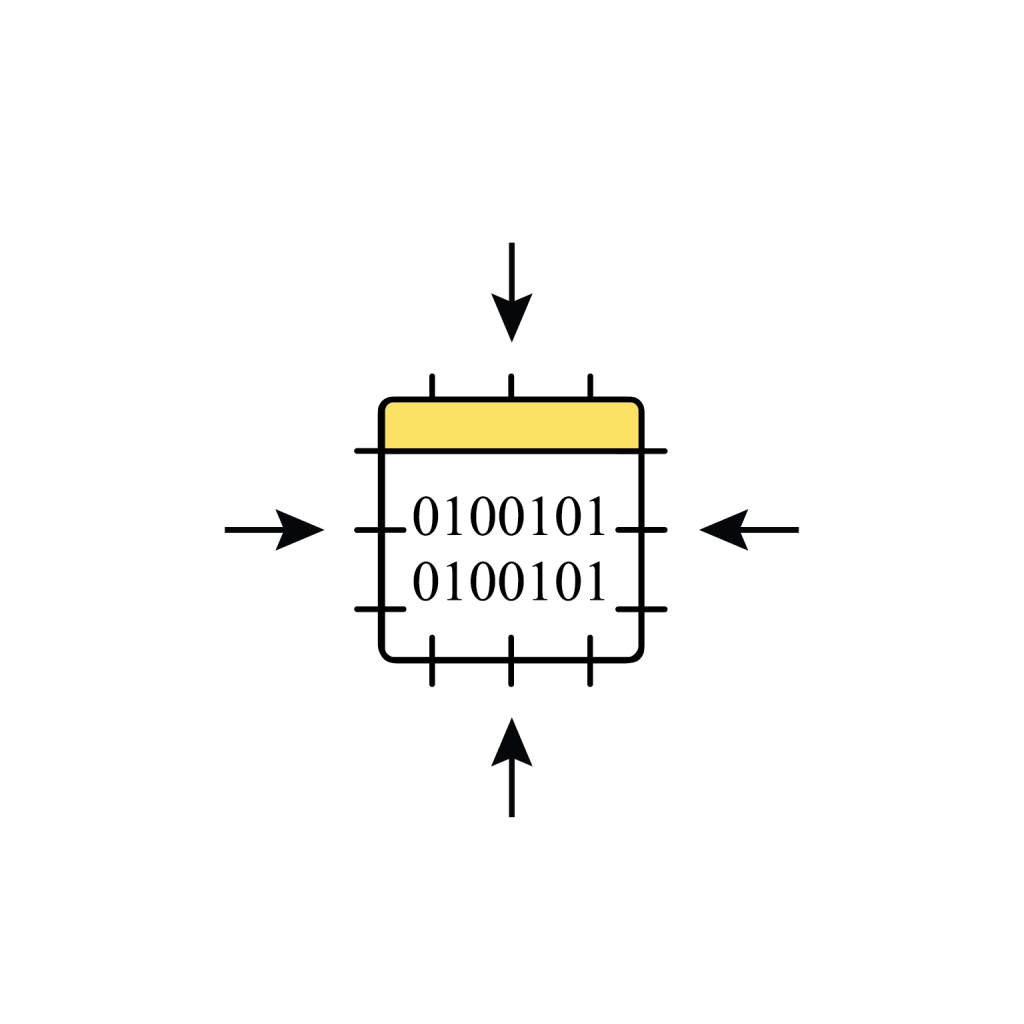
Work Package 4
Data Integration for smart communication
Addresses the data connectivity between applications, as well as data security, ethical use and standardization. Research is being done on system integration at the API level and not at the data level of individual systems from different manufacturers
Result 7: Standardized methodology for secure and ethical access to and use of data (collection, management and use).
Result 8: Linked data at systemic level, leading to system integration via APIs.
Result 9: Standardized methodologies and guidelines for determining and transforming buildings into ‘smart readiness’.

Work Package 5
Learning communities
Ensures the knowledge and experiences are shared in a learning community, resulting in the development of new partnerships and practical application in educational programs.
Result 10: Learning communities “Smart buildings”.

